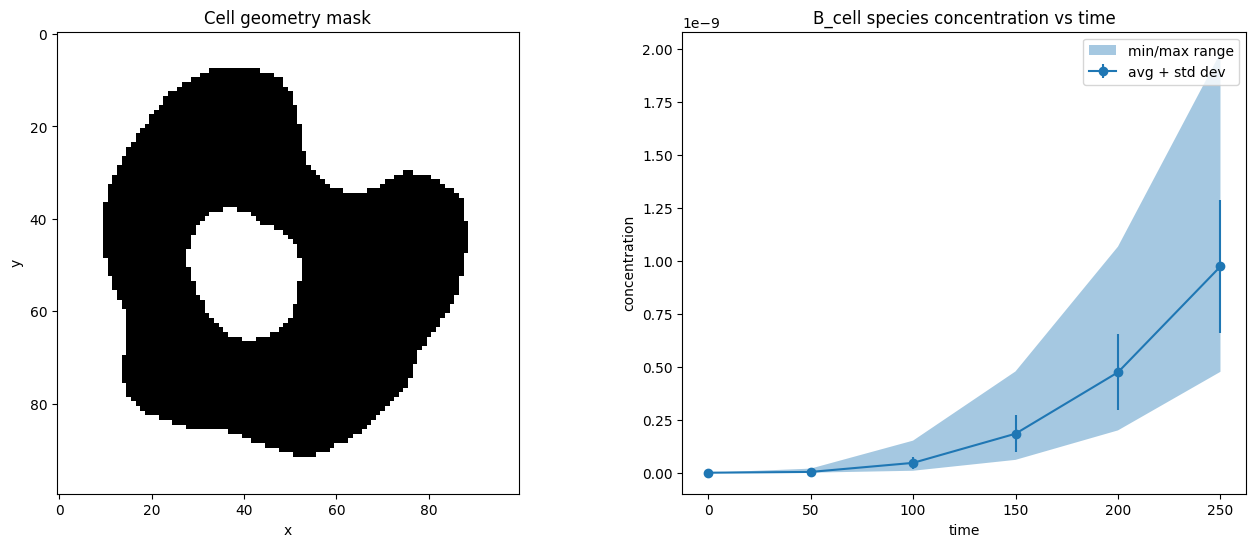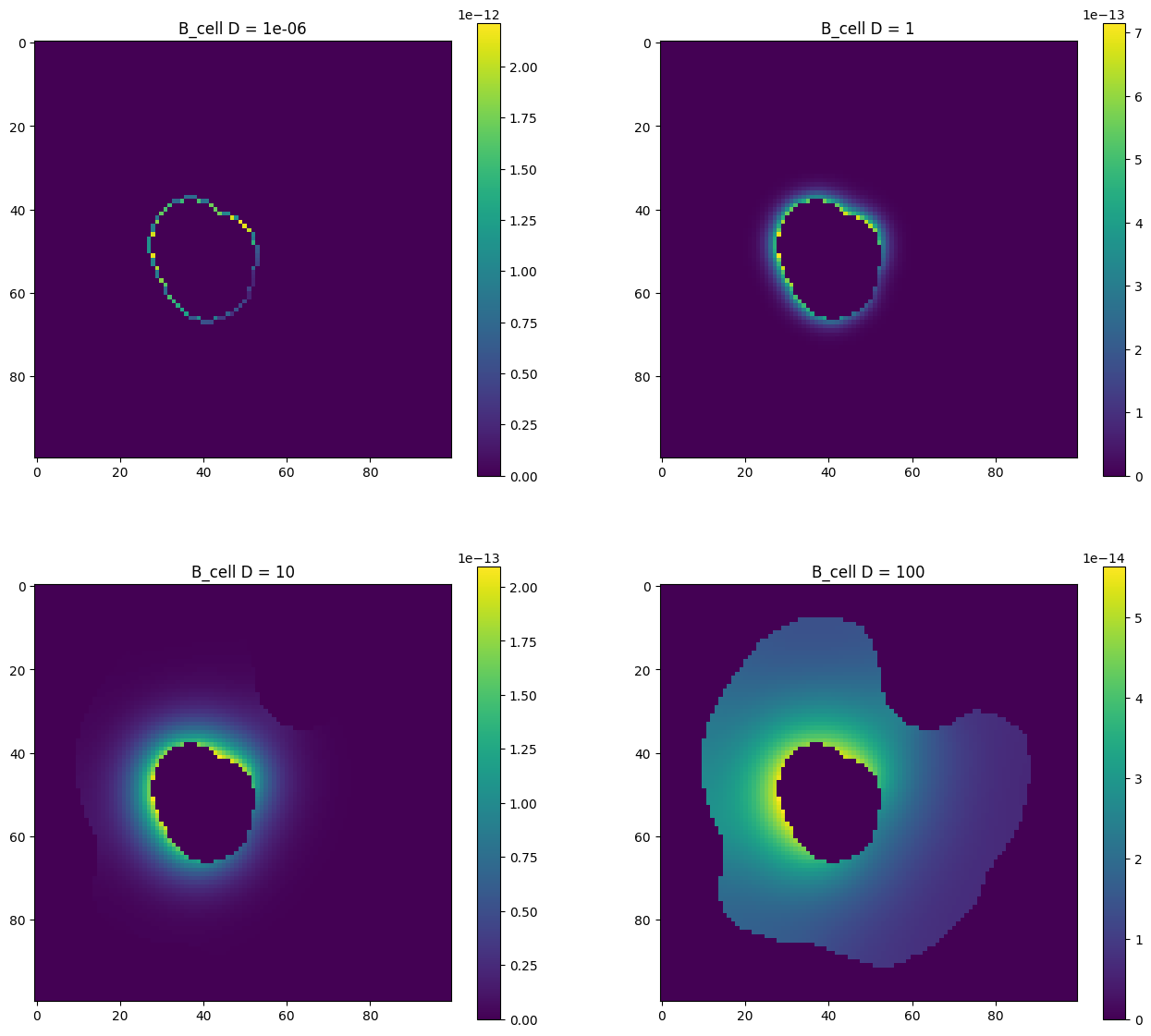Simulating
Open an example model
[1]:
!pip install -q sme
import sme
from matplotlib import pyplot as plt
import numpy as np
[2]:
my_model = sme.open_example_model()
Running a simulation
models can be simulated by specifying the total simulation time, and the interval between images
the simulation returns a list of
SimulationResultobjects, each of which containstime_point: the time pointconcentration_image: an image of the species concentrations at this time pointspecies_concentration: a dict of the concentrations for each species at this time point
[3]:
sim_results = my_model.simulate(simulation_time=250.0, image_interval=50.0)
print(sim_results[0])
print(sim_results[0].species_concentration.keys())
<sme.SimulationResult>
- timepoint: 0
- number of species: 5
dict_keys(['B_out', 'A_cell', 'B_cell', 'A_nucl', 'B_nucl'])
Display images from simulation results
[4]:
fig, axs = plt.subplots(nrows=2, ncols=len(sim_results) // 2, figsize=(18, 12))
for ax, res in zip(fig.axes, sim_results):
ax.imshow(res.concentration_image[0])
ax.set_title(f"t = {res.time_point}")
plt.show()

Plot concentrations from simulation results
[5]:
result = sim_results[5]
fig, axs = plt.subplots(nrows=3, ncols=2, figsize=(16, 20))
fig.delaxes(axs[2, 1])
for ax, (species, concentration) in zip(fig.axes, result.species_concentration.items()):
im = ax.imshow(concentration[0])
ax.set_title(f"'{species}' at t = {result.time_point}")
fig.colorbar(im, ax=ax)
plt.show()

Plot average/min/max species concentrations
To get the average (or minimum/maxiumum/etc) concentration of a species in a compartment, we first use the compartment geometry_mask to only include the pixels that lie inside the compartment.
[6]:
fig, (ax0, ax1) = plt.subplots(nrows=1, ncols=2, figsize=(16, 6))
# get mask of compartment pixels
mask = my_model.compartments["Cell"].geometry_mask
ax0.imshow(mask[0], interpolation="none", cmap="Greys")
ax0.set_title("Cell geometry mask")
ax0.set_xlabel("x")
ax0.set_ylabel("y")
# apply mask to results to get a flat array of all concentrations
# inside the compartment at each time point
times = [r.time_point for r in sim_results]
concs = [r.species_concentration["B_cell"][mask].flatten() for r in sim_results]
# calculate avg, min, max and plot
avg_conc = [np.mean(x) for x in concs]
std_conc = [np.std(x) for x in concs]
min_conc = [np.min(x) for x in concs]
max_conc = [np.max(x) for x in concs]
ax1.set_title("B_cell species concentration vs time")
ax1.set_xlabel("time")
ax1.set_ylabel("concentration")
ax1.errorbar(times, avg_conc, std_conc, label="avg + std dev", marker="o")
ax1.fill_between(times, min_conc, max_conc, label="min/max range", alpha=0.4)
ax1.legend()
plt.show()

Diffusion constant example
Here we repeat a simulation four times, each time with a different value for the diffusion constant of species B_cell, and plot the resulting concentration of this species at t=15.
[7]:
diffconsts = [1e-6, 1, 10, 100]
fig, axs = plt.subplots(nrows=2, ncols=2, figsize=(16, 14))
for ax, diffconst in zip(fig.axes, diffconsts):
m = sme.open_example_model()
m.compartments["Cell"].species["B_cell"].diffusion_constant = diffconst
results = m.simulate(simulation_time=15.0, image_interval=15.0)
im = ax.imshow(results[1].species_concentration["B_cell"][0])
ax.set_title(f"B_cell D = {diffconst}")
fig.colorbar(im, ax=ax)
plt.show()

[ ]: